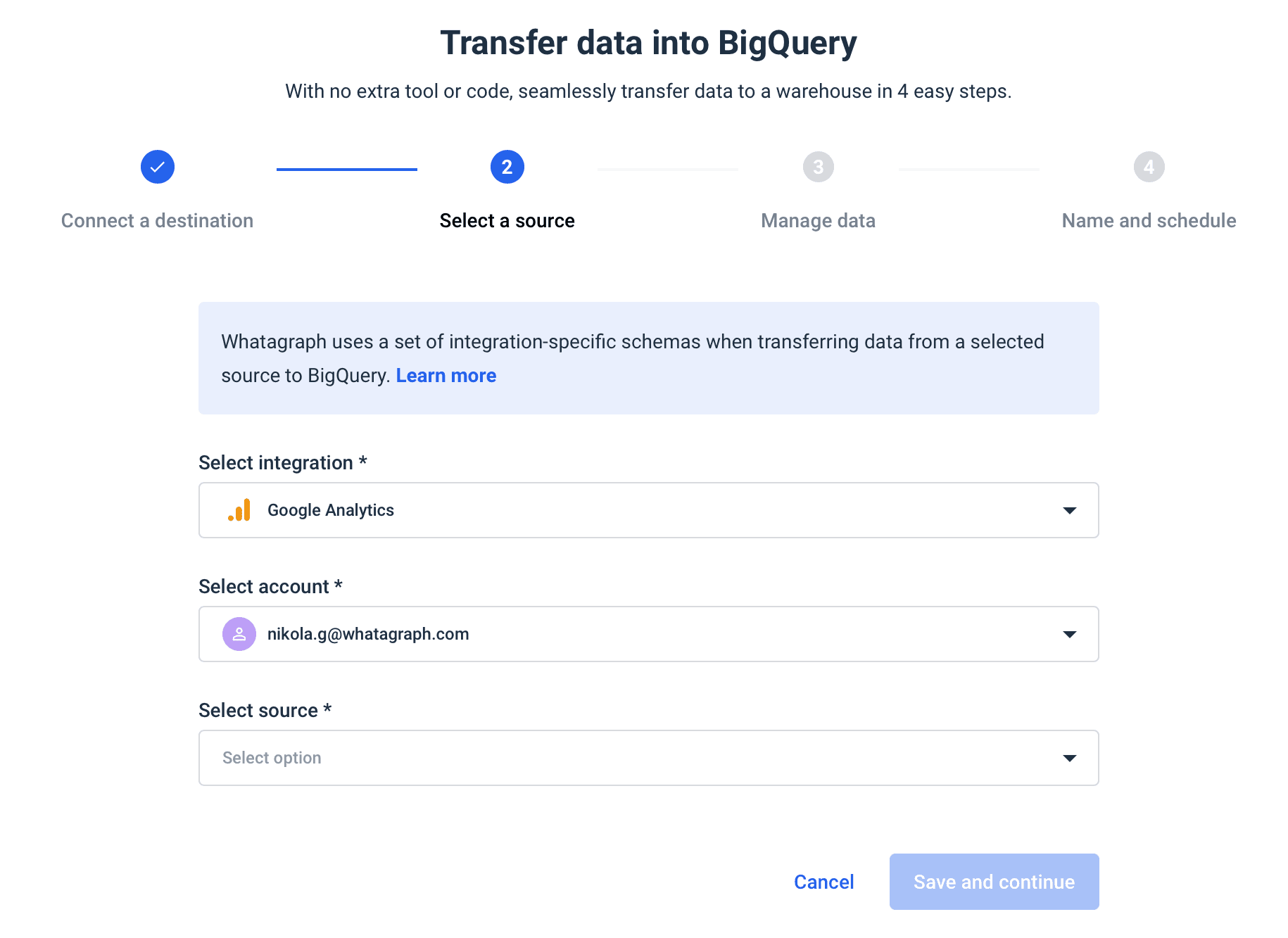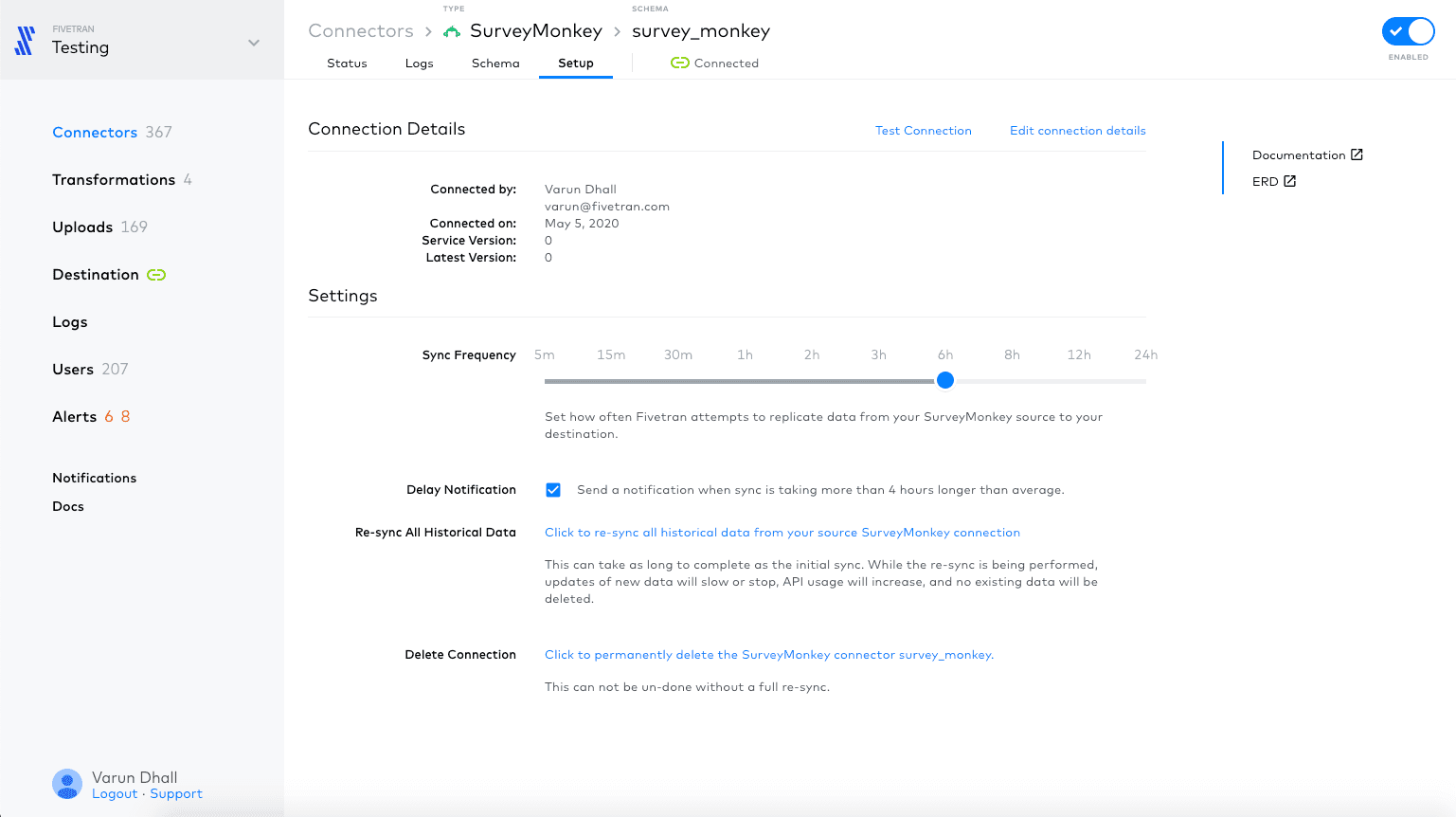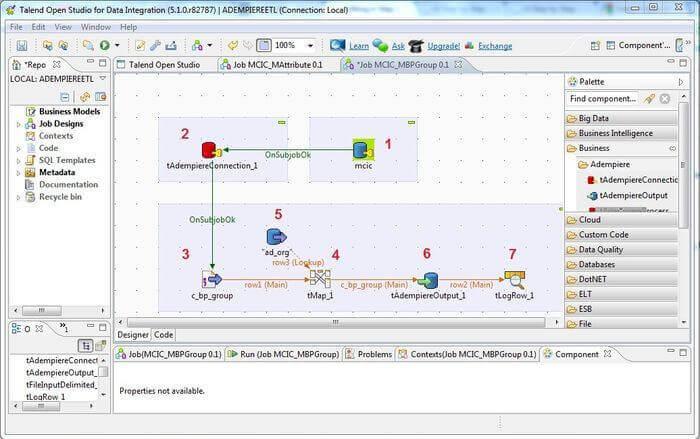8 Best Data Integration Platforms for In-Depth Marketing Analysis
Your company might be swimming in a sea of business data and yet getting little value from it. The problem is that your business data lives on different platforms and databases, making it challenging to analyze. So what can you do? You can integrate data from different sources using a data integration platform. By integrating your data, you can save time and improve the efficiency of your business. As you make more data-driven decisions, you can adopt more productive ways of completing tasks, which in return can increase your revenue.
Let’s take a look at the best data integration tools you should consider this year.

May 20 2021●5 min read

What is data integration?
Data integration is the process of combining data from multiple sources into a single source of information in order to:
- Achieve more efficient data management
- Extract meaningful insights
- Gain business intelligence
Data integration allows you to tap into analytics and operations that would otherwise be unavailable to you.
With relevant and accurate real-time data in your reports, you can make significant improvements to different areas of your business, including marketing performance, sales, and customer satisfaction.

What is more, data integration tools, helped by APIs, significantly increase communication and collaboration between teams.
This way, you can combine your customer relationship management (CRM) platform with marketing operations software or connect your content management system (CMS) with an email marketing app.
Data integration is a key step in a data pipeline and includes data ingestion, data processing, data transformation, and storage for easy retrieval.
It starts with the ingestion process and includes steps like cleansing, deduplication, mapping, and transformation.
Although there is no one-size-fits-all approach to the process, data integration workflows usually include a few common denominators like a:
- Network of data sources
- Master server
- Users accessing data from the master server
The user sends a request to the master server for data, and the master server aggregates the needed data from internal and external sources.
This data is then sent to the user as a single consolidated dataset which is ready for use.
Historically, data integration was a painstaking and time-consuming process, requiring a whole team of data engineers.
What those teams lacked back in the day was the choice of great data integration platforms that could speed up and automate the process.
Today, we’re in a much better position. Some of these data integration tools are so easy to use that even non-tech staff can connect data sources, select the destination, and run data transfers to analyze and visualize consolidated data.
Before we enter the battle of data integration tools, let’s clarify a few concepts that are often mistaken for one another.
Data integration vs. data ingestion
Data ingestion is the process of moving data from one source to another for storage. The target destination can be a database, data lake, or data warehouse. In data ingestion, the data is extracted from its original form and transformed into a suitable form for storage. The source data is usually extracted from CSV, JSON, Excel, and XML files.
An essential difference between data integration and data ingestion is that in data ingestion, the data is not processed before being loaded into the destination. The data is sent in the original form with no alteration or filtering.
So to conclude:
- Data ingestion: Collecting and transferring data from various sources to the target storage for further processing.
- Data integration: Bringing together raw data from diverse sources, transforming it, and loading it onto a data warehouse or another destination.
Sure, but then what’s the difference between data integration and the ETL process?
Data integration vs. ETL
The Extract, transform, and load (ETL) is a process of merging and consolidating data coming from various sources.

Data integration, on the other hand, is a broader procedure that can be used for more than just moving data from a source to a target destination.
In other words:
- ETL: Data is extracted from a source and loaded into a centralized repository where teams can access it for analysis and reporting.
- Data integration: Produces a consolidated picture of data from a number of sources or already converted data ready for use in a specific process or application.
Now that this is clear, let’s get down to our choice of the best data integration platforms.
8 best data integration platforms
But first, we need to clarify our criteria or how we come up with the list. The qualities we expect from data integration solutions include:
- Low-code or no-code configuring and connecting
- Drag-and-drop user interface and visualization
- Out-of-the-box connectors that allow fast integration with common enterprise systems SaaS apps, databases, data lakes, and data warehouse.
- Ability to handle multiple data structures and formats.
- Machine learning as a bonus capability
- Scalable infrastructure
1. Whatagraph
Whatagraph is an automated data pipeline that helps teams load data from multiple marketing data sources to Google BigQuery.
When designing Whatagraph’s data transfer service, we were going for a no-code platform that effectively removes manual work. With Whatagraph, you can complete the data transfer in just four steps:
- Connect the destination
- Choose the integration
- Set the schema
- Schedule the transfer
This means Whatagraph is perfect for small in-house marketing teams that can’t afford a full-time developer, as well as marketing agencies that handle hundreds of accounts for different clients.

You also have the option to set the transfer frequency — when and how often you want your data moved to BigQuery.
Key features:
- No coding required
- Move data from a source to BigQuery in just 4 steps
- Data visualization via drag-and-drop dashboards
- Infinite scalability with no maintenance
- Transparent and easy-to-understand pricing
Whatagraph pricing:
Three pricing plans - Professional, Premium, and Custom are based on the number of users and data sources.
Data transfers to BigQuery are available for a flexible fee per transfer, either as an add-on to one of the pricing plans or as a standalone feature.
If your workload includes writing tons of reports using data from diverse sources, or you simply want to update your data stack and keep your data safe, book a demo call with our product manager and find out how Whatagraph can help.
2. Integrate
Integrate brings to the table a straightforward, easy visual interface that removes the edge of creating data pipelines between different sources and destinations. The platform has recently been upgraded with ELT and reverse ETL capability for actionable insights for the data warehouse, data observability, and quick Change Data Capture (CDC).
Key features:
- Very customizable
- Drag-and-drop user interface
- Simple third-party platform integration
- Excellent customer service team
Integrate pricing:
The Starter plan pricing begins at $15,000 per year, and it can go up to $25,000 per year for the Professional plan.
3. Informatica
Informatica is a cloud-based data integration platform for ETL and ELT that allows users to ingest, integrate, and cleanse data within Informatica’s cloud-native ETL and ELT solution. You can link source and target data with thousands of connectors that can recognize metadata, which makes it easier to run complex integrations.
Key features:
- Able to deal with a high volume of data
- B2B data exchange support
- Solutions for all emerging data engineering use cases
- Up to date with recent data engineering developments
Informatica pricing:
Starting at $2,000 a month as the price for Integration Cloud’s base plan. The cost of the add-on tiers is not publicly available.
4. Fivetran
Fivetran is a low-code ETL platform that automates the ETL processes and offers a bevy of pre-built connectors for popular data sources. Its functionalities allow you to automate pretty much the entire data pipeline, as well as transform and export data using pre-built data models.

Users also have the option to raise a request for a connector or build their own if not already accessible.
Key features:
- Automated data pipeline that transforms data with standardized schemas
- Supports a range of cloud-based data warehouses like BigQuery, Snowflake, Microsoft, and Azure SQL
- Logging and reporting capabilities
- Scalable cloud platform on demand
Fivetran pricing:
All five pricing plans are free at the start and users are charged based on how much data is processed through the platform, more accurately on the number of rows you insert, amend, or delete. Whichever pricing tier you choose, the cost of using Fivetran will increase with the amount of data you sync.
5. Stitch
An ETL tool for developers now owned by Talend. Stitch is a cloud-first, open-source data integration tool that allows users to quickly migrate data. Stitch is the tool of choice for businesses that need to transfer billions of records from databases and SaaS apps into data warehouses and lakes so they can be analyzed with business intelligence tools.
Key features:
- Easy integration with many data sources
- Scalable
- Straightforward and transparent pricing model
Stitch pricing:
The Standard plan is the basic package and costs $100/month and goes up to $2,500/month. Advanced and premium plans are billed annually.
6. Panoply
As a self-service, automated cloud data warehouse, Panoply is the tool of choice for people who want to simplify the big data integration processes. You can use Panoply to effortlessly sync, store, and access your data while also unlocking complex insights without having a data engineering team on standby. Panoply is often used in conjunction with other data integration tools like Stitch and Fivetran to streamline their data integration procedures.
Key features:
- Simple and straightforward data integration platform
- Excellent experience with the performance of data models
- Fast run time
Panoply pricing:
The Lite plan starts at $399/month, going to $2,729/month what the Premium plan costs.
7. Talend
Talend is a safe cloud integration platform-as-a-service (iPaaS) you can use to integrate your cloud and on-premises data. It comes with a solid graphical toolkit, pre-made integration templates, and an extensive library of components as part of Talend Integration Cloud.

With Talend, making data-driven decisions becomes easier thanks to top-of-the-line data integrity and data quality solutions offered by Talend Cloud’s pool of apps.
Key features:
- Automated backup and disaster recovery
- Can scale up and down as needed
- Improved data flow protection mechanism
Talend pricing:
Starts at $1,700 per user per month or $12,000 annually.
8. Boomi
Boomi is a data integration tool that you can use in the cloud, on-premises, or in a hybrid environment. It comes with a low-code/no-code interface while leaving users the ability to link to external organizations and systems.
Key features:
- Large number of pre-built connectors
- Drag-and-drop-compatible development platform
- Great user community with quick-timed assistance
Boomi pricing:
The Pro Plus plan starts at $2,000/month and goes up to $8,000 what you need to pay for the Enterprise Plus plan.
Our verdict
These eight data integration tools are all refined to be the best in what they do, as each of them comes with functions that meet different business needs.
Informatica, for example, would be a great choice for a team of data engineers at a large company who can invest time to specialize in this platform's powerful data processing functionalities.
As an open-source platform, Talend would be a good choice for a savvy data engineer who likes to tamper with code in exchange for reduced usage cost.
Whatagraph, on the other hand, is designed with two types of users in mind:
- Marketing agencies that track multiple channels for hundreds of clients
- Small Non-tech marketing teams
We can offer a data integration and reporting tool that simplifies moving large amounts of data from different sources to BigQuery with just several clicks.
If you’re looking for an easy-to-use solution to connect data from various marketing sources, keep your marketing data safe, or want to visualize your BigQuery data, book a demo call and find out how Whatagraph can help.

WRITTEN BY
Nikola GemesNikola is a content marketer at Whatagraph with extensive writing experience in SaaS and tech niches. With a background in content management apps and composable architectures, it's his job to educate readers about the latest developments in the world of marketing data, data warehousing, headless architectures, and federated content platforms.


